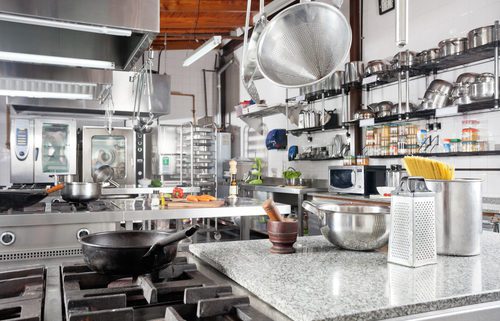Essential Hygiene Tips For Operating A Restaurant
You may not have known this because it’s not something restaurants publicize on a regular basis, but thousands of people are sick every year because of outbreaks related to foodborne diseases that originated in a restaurant. Sadly, no matter how stringent the safety standards are involving food and restaurants, there is no foolproof, 100% effective way to make sure that food handlers play by the rules of general restaurant hygiene tips and recommendations. They are supposed to wash their hands… but do they always? And how many pests are coming and going through open doors, windows, and via visiting customers and vendors? What is a restaurant owner to do? The following are tips for basic restaurant hygiene.
Utilize Effective Pest Control
Keep in mind that it’s not just insects, cockroaches, and rodents that pose a problem in restaurants. Bedbugs can also rear their ugly little heads by traveling back and forth with your customers and workers. The best practice is, of course, to have a regularly scheduled pest control professional come in and treat not just existing problems but lay down preventative measures so you don’t have to hear about a problem from a customer or, god forbid, the health department. But on your own, you will need to take daily pest control measures such as using natural pest sprays to keep your restaurant free of pests.
Ensure Stringent Personal Hygiene Methods
We all know that you’re supposed to wash your hands before and after handling food. In theory, that’s a great practice. Getting your employees to actually commit themselves to this is another story altogether. Teach proper hand washing techniques to your employees and educate them on the dangers of spreading germs from restrooms and raw foods such as seafood and poultry.
Keep Kitchen Utensils Clean
One would think that this goes without saying, and they would be wrong. It’s a little like the handwashing thing. You have to not only teach your employees but see to it that pots, pans, utensils, cutting boards, sponges, towels, etc. get not only washed but sanitized to kill harmful bacteria. Chlorine bleach is a wonderful way to achieve this. It only takes a little bit of something left behind to feed a cockroach for a long, long time. Scrub and sanitize everything!
Be Sure That Food Is Cooked Thoroughly
The caveat here is that some people like their steaks, and other meats, cooked rare. If you want to keep that customer coming back, you will do as they say but assure them that there is the chance that undercooked meats can present a health hazard. That aside, make sure that foods are cooked to the proper inner temperature to decrease the possibility of bacterial growth and the spread of disease. Boiling temperatures should be reached by curries, stews, and soups before serving. Even when reheating, proper temperatures need to be achieved.
Select And Handle Food Carefully
Where you buy your food shouldn’t matter, but sadly, it does. Always purchase restaurant foods from reputable, reliable vendors. Spoiled or pest infested foods delivered to your store can contaminate the rest of your food supply and equipment. Additionally, always check expiration dates as well as a doing a physical inspection of foods for damage, bloating, broken seals, etc. Store all of your food in properly sealed containers and when handling any kind of food, avoid cross-contamination at all costs.
You can make lots of good hygiene rules and regulations as they apply to your food handlers, servers, etc. What you cannot do is watch them 100% of the time to make sure they adhered to them. This is why it’s important to follow as many of the tips listed above as possible and always be on the lookout for signs of pests. Prevention is, of course, the best ammunition against pest infestations and the spread of disease. Don’t wait until the health department shuts you down!






